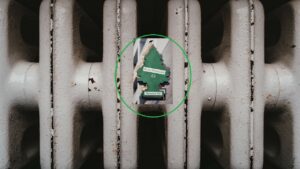Look at Your Feet and Find Out If You Have High Cholesterol
Recent research has revealed that examining one’s feet can potentially identify a typical and dangerous issue, specifically high cholesterol. Here’s a simple way to check if you might have this problem.

What happens if you have high cholesterol?
High cholesterol involves fat accumulation in the arteries, leading to heart attacks, strokes, and atherosclerosis. Typically, this issue is detected through routine blood tests as it isn’t associated with specific disorders, aside from an increased risk of cardiovascular diseases.

It’s always a good idea to check for high cholesterol, especially if you have an unhealthy diet and are sedentary and disorderly. To manage your cholesterol levels, you can observe your feet and decide if it’s necessary to schedule a doctor’s appointment.
Examine your feet and take note of these details:
To determine if you might be dealing with high cholesterol, you can perform a self-examination in front of a mirror:
- Stand barefoot in front of a mirror.
- Carefully inspect your feet.
- Pay attention to your fingers for any bluish discoloration.
- Keep in mind that very thick nails could be indicative of high cholesterol.
- Itchy fingers may suggest altered cholesterol.
- Tingling and numbness in the feet can also be related to cholesterol.
- Sometimes, a lump may appear in the Achilles heel area behind the ankle.

How do you naturally lower cholesterol?
If you’ve discovered that you may have a cholesterol issue, you can take steps in your daily life to address the situation. There are natural remedies for reducing cholesterol levels:
- Limit consumption of animal fats.
- Eliminate refined sugars.
- Incorporate Omega-3 and extra virgin olive oil into your diet.
- Avoid fried and processed breaded products.
- Modify your lifestyle, specifically by:
- Quitting smoking.
- Abstaining from alcoholic and sugary carbonated beverages.
- Achieving a healthy weight through weight loss.






